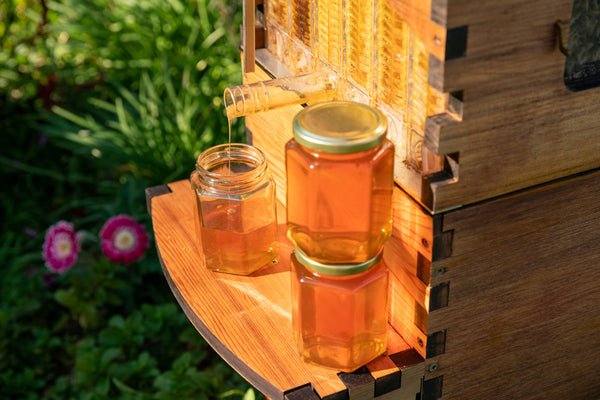Your Cart is Empty
by Flow Hive 3 min read

We’re big believers in keeping more than one hive. There’s no need to begin with a lot of hives, but as your beekeeping knowledge and passion grows, your apiary is likely to expand naturally. While it may seem a bit daunting as a new beekeeper, starting out with two hives has a lot of advantages over keeping a single colony.
Every honeybee colony is different. If you start your beekeeping journey with one hive, you may get a sense that what happens with that first colony is normal or standard behavior for bees. Having a second hive enables you to compare and contrast what is happening in both hives. This rapidly increases the amount you can learn in your first seasons as a beekeeper.
While you can learn significantly more by keeping a second hive, it doesn’t necessarily mean significantly more work beekeeping work. If you’re conducting a brood inspection on a single hive, you’ll need to suit up and get your smoker going. If you’re inspecting one hive, it’s not such a big job to then check another one on the same day.

If you have more than one hive, you’ll get a sense more quickly of when something is wrong with a colony. If you notice that one colony is growing quickly and storing lots of honey while the other has low numbers or is not storing honey, that gives an indication that the weaker colony might have an issue. If on the other hand, neither colony is storing much honey, it’s more likely that local conditions might not be great at the time and there’s not a good nectar flow on.
As with any agricultural activity, beekeeping is subject to peaks and troughs in production, good seasons and bad. One year could yield multiple harvests, while during another you might not get to harvest at all. Equally, one hive could produce a lot more honey during a season than another.
If one of your colonies has a disease issue, low numbers or needs to be requeenedduring a nectar flow, you probably won’t get to harvest any honey from that hive. Having a second hive means that you’ve got a much better chance of still getting a harvest and not missing the season completely.

One of the major benefits of having more than one hive is that it allows you to share resources between colonies. This is really useful if one colony is struggling. You can swap frames of brood from a strong colony into a weaker colony to help boost the numbers in the struggling hive.
In some cases, you can even merge two weak colonies to make one stronger colony. This could be a good option if you’re worried about smaller colonies surviving the winter, or to take advantage of a heavy nectar flow.
We’ve got more details on this topic at TheBeekeeper.org.

Another reason you might want to transfer frames from one hive to another is for swarm management. A lack of space in the hive is a trigger for swarming, so if a colony shows signs that it is preparing to swarm, you can give them more space in the brood box. If you transfer some brood frames to another hive, it can help reduce the likelihood of the colony swarming.
If one of your colonies needs to be requeened, it’s really useful to have another colony. You can take a brood frame with eggs from your queenright hive and place it in the queenless brood box. The bees will then raise a queen by feeding royal jelly to the young larvae.
So there’s a few reasons why it’s a good idea to have more than a single hive in your apiary. You can check out our range of hives here.